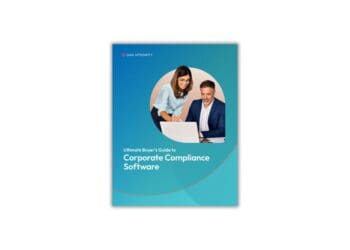Software can make compliance simpler and easier for as long as the pandemic lasts (and beyond), from doing the heavy lifting when it comes to pre-clearing trades to being able to delegate review authority with the click of a mouse. StarCompliance’s John Grgurich writes.
The world is facing more questions than ever surrounding the coronavirus pandemic. For financial firms and their attendant compliance departments, one of those questions is, how much longer will their employees be working remotely? It’s a question that needs answering, as more and more firms come to the realization they may need to reassess their compliance processes and procedures going even beyond 2021.
Because of the pandemic and the resulting work-from-home scenario, common tasks — like keeping up with personal trade requests or making sure employees don’t fall behind on certifications — that were once easily executed when employees were on-site are no longer so easily executed, and firms need to solve for that. And as companies become more and more used to operating in this fashion, it’s also not a stretch to say that remote work will become more the norm after the pandemic is brought under control.
The following are five ways software solutions and the automation they offer can help compliance departments stay on top of this evolving situation in the short and long term.
1. Let Software Do the Work on Trade Pre-Clearance
Whether your firm is large or small, whether the world is in the grip of a pandemic or not, there’s no reason compliance officers need to personally approve or deny straightforward employee requests to execute a trade. Modern compliance software platforms use rules engines configured to a firm’s own specifications — per their code of conduct and policies — to inform and automate the pre-clearance and approval process. Employees quickly and easily fill out pre-clearance request forms and receive automated approval or denial decisions within seconds. For situations that aren’t clear yes-or-no calls — trade requests that need further review by the employee’s manager or compliance team members — firms can set up custom escalation paths.
2. Leverage Electronic Broker Feeds for Trade Reconciliation
Reconciling brokerage statements and the employee trades contained therein against what the firm has on record is another task an automated compliance platform makes short work of. A compliance software company will have dozens if not hundreds of established electronic feeds that stream a comprehensive list of executed trades for fast, easy matching against what firm employees have entered — or not entered, as the case may be — in the firm’s compliance software system. Be aware: It’s not a given that a compliance software vendor will have set up such broker feeds. It’s expensive to do, and oftentimes, setting them up is not a high priority for the broker-dealer. Ask about this capability before you ink any deal. It’s a client-focused service worth searching out.
3. Create Certifications Applicable to Every Employee
The bigger the firm, the more employees there are and the more roles within the organization. When it comes to completing certifications and trying to get to that magic 100 percent mark, the last thing you want is employees laboring through certs with long portions that are meaningless to them. For starters, this will slow down the actual completion process. And when next year rolls around and it’s again time for employees to press pause on their primary work to complete their certification, they may have even less motivation to do so, remembering from the previous year how long and tedious the process was. Good compliance software will allow firms to create certs by user group, role, location and other demographics so only relevant questions will be posed to the individual employee.
4. Execute Firm-Wide Communications from One System
Employees are more dispersed than ever, and the situation looks set to stay that way for the foreseeable future. Versus communications being sent from numerous systems and email addresses, a modern compliance platform offers a centralized, secure way to broadcast critical compliance messages to the whole employee population or just to specific segments of it. Some users of such platforms are reporting that messages broadcast via their platforms are more likely to be heard and heeded.
5. Review Delegation Functionality
There’s little doubt fewer people will be boarding trains or planes for vacations this year. That being said, it’s still likely many employees will take time off from work, even if only for staycations. But the markets won’t be on any sort of holiday, and employees will be trading, particularly if said markets get choppy like they did last spring. That being the case, there needs to be someone at the ready to handle the trade request escalations that are sure to pop up if a key member of the compliance team takes his or her well-deserved break.
What if you could simply assign a person, in your compliance platform, the authority to review trade escalations for you while you’re gone? This kind of capability can and should be fundamental compliance platform functionality. It’s another example of what a simple concept like centralization — well-thought-out and well-executed — can bring to an organization. Change doesn’t have to be revolutionary to make a real difference. Small changes — tweaks, evolutions, optimizations — to established processes can bring some welcome certainty to these uncertain times.



 John Grgurich is the Content Manager and Blogger at
John Grgurich is the Content Manager and Blogger at 









